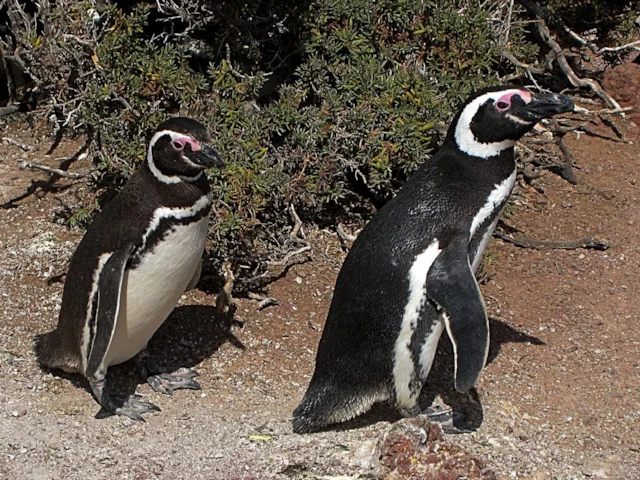Climate change behind breeding failure in Magellanic Penguins
292a08a0-95be-4d82-a630-3fe6760ea039

An overall increase in rainfall at an Argentinian penguin colony has had a direct effect on the survival rate of chicks over the last 50 years.
Measurements of rain near Punta Tumbo, Argentina, home of a sizeable Magellanic Penguin colony, have been taken since at least 1960, and the amount of rain there has increased by an average of 20 mm per year. Researchers monitored a total of 3,496 penguin chicks from the colony over the 26-year period between 1983 and 2010, recording the way in which any that died met their end. From this, they could to determine the effects of weather on the penguins' likelihood of survival.
Starvation and predation were the most frequent causes of death, though rain caused between 43 and 50 per cent of chick deaths in two of the years included in the study. In 13 of those years, chicks died during storms, though only in 16 out of 233 of these storms. Despite this, when more chicks died in the storms, fewer also fledged in the same year, indicating a wider effect than just immediate destruction by the weather.
The researchers deduced that chick mortality was at its highest when rainfall was high and temperature at its lowest, and the majority of these deaths occurred when the chicks were between nine and 23 days old. The worst storms would also kill older chicks. To add to this danger, egg-laying time became longer and less synchronous during the study period, increasing the amount of time in which the chicks were vulnerable.
The number of Magellanic Penguins at the colony has decreased by around 20 per cent since 1987, and not only are they laying eggs later and over a longer period, but are having to travel further to forage – these factors all reduce reproductive success.
Climate change has increased the number and intensity of storms, in turn increasing reproductive failure in the penguins and almost certainly that of other species in the region. All climate models predict that this will continue, and wildlife populations are increasingly likely to be adversely affected in result. The already overwhelming evidence for global warming – the result of a rapid increase in the average surface temperature of the world – keeps being added to on a daily basis.
Measurements of rain near Punta Tumbo, Argentina, home of a sizeable Magellanic Penguin colony, have been taken since at least 1960, and the amount of rain there has increased by an average of 20 mm per year. Researchers monitored a total of 3,496 penguin chicks from the colony over the 26-year period between 1983 and 2010, recording the way in which any that died met their end. From this, they could to determine the effects of weather on the penguins' likelihood of survival.
Starvation and predation were the most frequent causes of death, though rain caused between 43 and 50 per cent of chick deaths in two of the years included in the study. In 13 of those years, chicks died during storms, though only in 16 out of 233 of these storms. Despite this, when more chicks died in the storms, fewer also fledged in the same year, indicating a wider effect than just immediate destruction by the weather.
The researchers deduced that chick mortality was at its highest when rainfall was high and temperature at its lowest, and the majority of these deaths occurred when the chicks were between nine and 23 days old. The worst storms would also kill older chicks. To add to this danger, egg-laying time became longer and less synchronous during the study period, increasing the amount of time in which the chicks were vulnerable.
The number of Magellanic Penguins at the colony has decreased by around 20 per cent since 1987, and not only are they laying eggs later and over a longer period, but are having to travel further to forage – these factors all reduce reproductive success.
Climate change has increased the number and intensity of storms, in turn increasing reproductive failure in the penguins and almost certainly that of other species in the region. All climate models predict that this will continue, and wildlife populations are increasingly likely to be adversely affected in result. The already overwhelming evidence for global warming – the result of a rapid increase in the average surface temperature of the world – keeps being added to on a daily basis.

